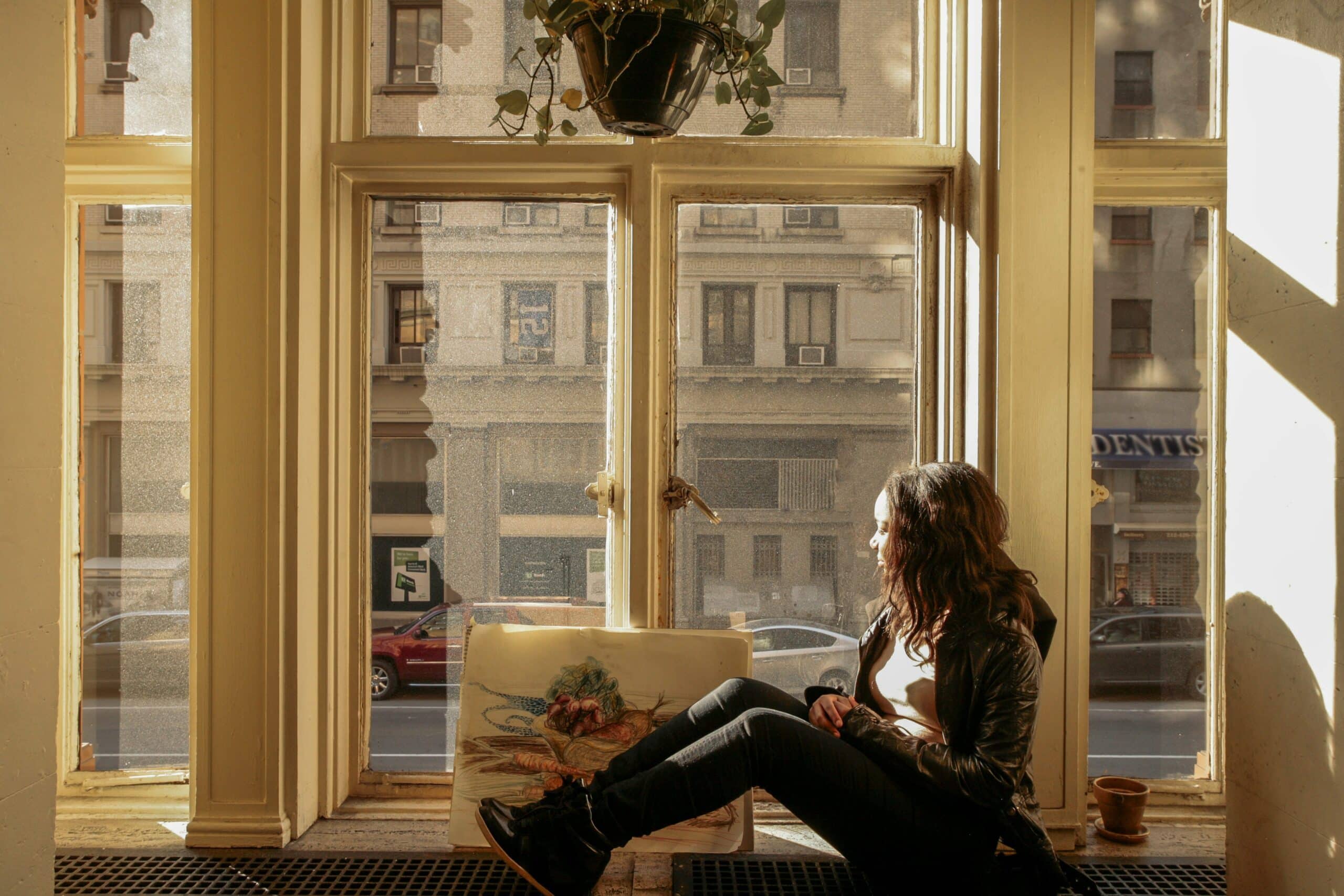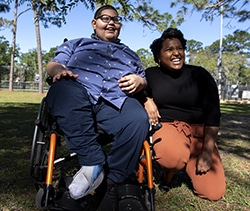
“Stephanie Davis” is pursuing her dream of attending art school in New York City thanks in large part to help she received from Miami Law’s Children & Youth Law Clinic. Although she asked that her real name not be used, she agreed to be pictured with her art.
Freshman class president at Miami’s Design & Architecture High School, one of the nation’s best magnet schools, Stephanie Davis had ambitions of attending a top arts school and a father intent on helping her achieve her dream.
But as she was getting ready to start her junior year, Davis, who asked that her real name not be used, was plunged instead into a nightmare when her father, a veteran who had served in Iraq, committed suicide
“Suicide of a parent is the worst thing ever, and you just don’t know what to do,” Davis said.
Estranged from her mother, Davis became a ward of the state and was referred to the Children & Youth Law Clinic at the University of Miami School of Law. The clinic, which has been supported since 2004 by a Children’s Legal Services grant from The Florida Bar Foundation, aids current and former foster youths in matters of dependency, health care, mental health, disability, independent living, education, immigration and other civil areas, ensuring that they have a voice in court proceedings.
The Children & Youth Law Clinic received a special $100,000 grant in 2013-14 from The Florida Bar Foundation made with funds provided by the Miami Beach-based Batchelor Foundation. The grant, which honors Miami Law alumnus and past Florida Bar Foundation President Burton Young, is enabling the clinic to continue to help clients such as Davis, just as the Bar Foundation’s revenue from Florida’s Interest on Trust Accounts Program has slowed to a trickle.
Marielle Moore was one of two law students assigned to Davis’ case. At that time Davis, 17, was living with a relative. When neither that arrangement nor her initial foster placement worked out — a shooting near her first foster home convinced her it was time to leave — Moore helped ensure her placement with a foster family that one of the clinic faculty knew from prior cases.
“The foster placement was such a good fit because so many people had input and so many people were pushing for her to be in a good environment for her to flourish academically,” Moore said.
Davis commuted from her foster home more than an hour each way by bus and rail so that she could continue attending DASH, which paid off when she was accepted at the School of Visual Arts in New York. But getting in was just the first step. Davis earned a host of scholarships and saved money to pay for school by working in an upscale furniture store, but she still needed the Road to Independence benefits that help former foster youth pay for living expenses and college tuition. Even after she helped Davis secure the benefits, Moore faced a number of hurdles. Enrolling in an out-of-state private art school would require paying a seat deposit, buying a plane ticket and other expenses not typical for beneficiaries of the program.
“There is no box on the form for ‘fancy art school in New York seat deposit,’ ” Moore said. “That took a lot of explaining.” Working with the Guardian ad Litem Program and the Department of Children and Families, Moore advocated successfully for Davis’ academic needs.
Moore sent a slew of e-mails over the course of Davis’ senior year and attended several status hearings trying to make sure that all the parties from Davis’ caseworker to the judge to the college’s financial aid office were keeping everything on track. Meanwhile, the clinic gave Davis the opportunity to provide the illustration for a handbook it was publishing on youth health rights, which is now part of her portfolio.
Davis said unlike her caseworkers, who encouraged her to stay in Florida for school, the students and faculty at the law clinic took her goal of getting into a first-tier art school seriously and did all in their power to make it happen. She calls art her “anchor” and hopes that one day it will also become a tool for helping others.
“I want to become well known and successful so that I can use my life as an example of how you can pursue your dreams when the odds are against you,” said Davis, who continues to search for scholarships and other forms of financial support to help her finish her degree.
Many of the children who get help from Miami Law’s Children & Youth Law Clinic have much more basic needs than getting into the right college. Another of Moore’s clients was a young girl with a genetic disorder that has left her nonverbal and unresponsive.
“The rights of her parents were terminated when she was very young because they couldn’t and refused to care for her,” Moore said. “People like that don’t have anyone in their corner.”
As with Davis, one of the keys to that child’s case was ensuring she had the right placement, in her case in an appropriate medical foster home, which required working closely with the Agency for Persons with Disabilities and making home visits.
Moore said the range of her experiences at the law clinic taught her how to work independently to solve client problems. Meanwhile, the systemic work that the clinic is now emphasizing with the support of the Batchelor Foundation funds has inspired her to pursue big-picture solutions.
Bernie Perlmutter, co-director of the Children & Youth Law Clinic, said the clinic is making a concerted effort with the grant to increase its policy-related work in health-care access, guardianship, independent living, and education for youth aging out of foster care, as well as the trafficking of foster children.
“We wanted to recognize the Batchelor gift as a special gift,” Perlmutter said. “We’ve redoubled our efforts to do systemic work. We want to take the advocacy and the analysis applied to our work to a higher level, so we are not just thinking of a single client but of other clients and how they will be impacted.”




